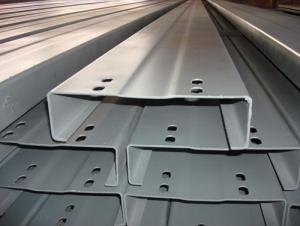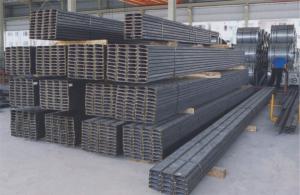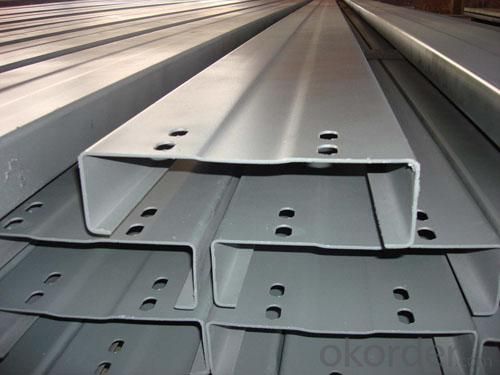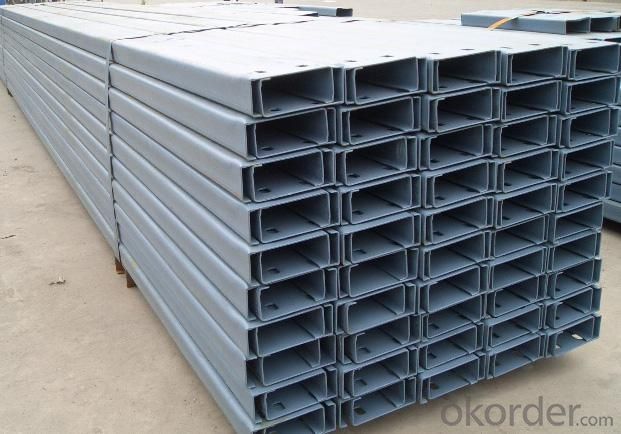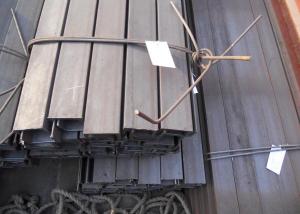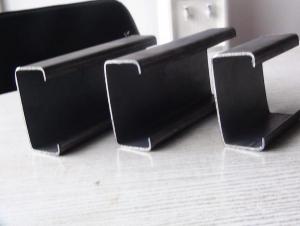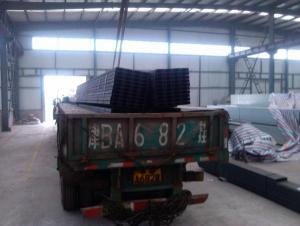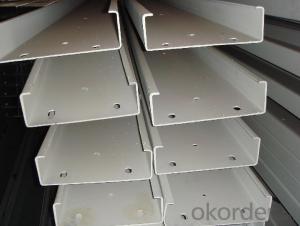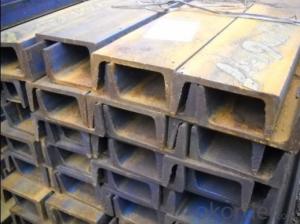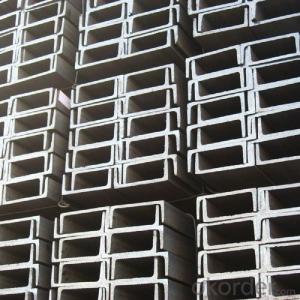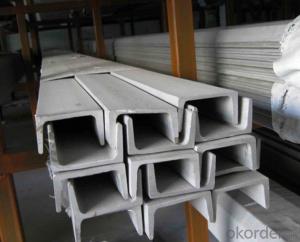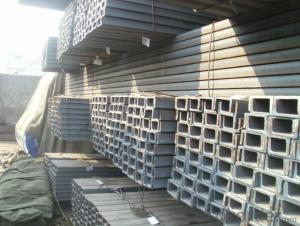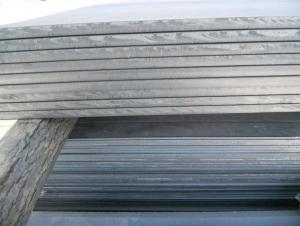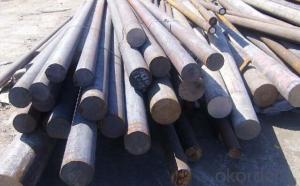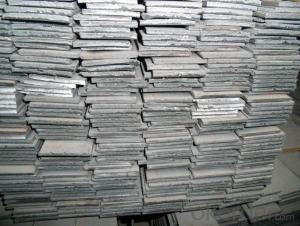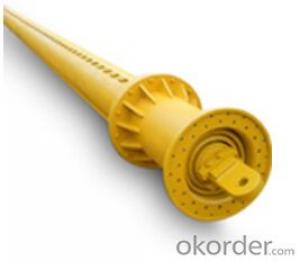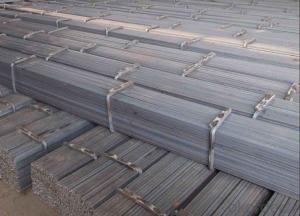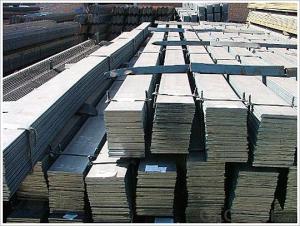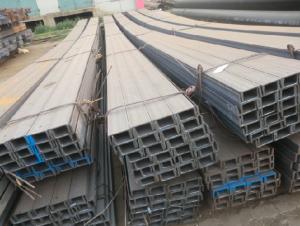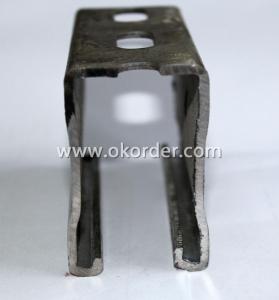High Quality And Low Price CR C Bar
- Loading Port:
- Tianjin Port,China
- Payment Terms:
- TT or LC
- Min Order Qty:
- 20Tons m.t.
- Supply Capability:
- 1000 tons per month m.t./month
OKorder Service Pledge
OKorder Financial Service
You Might Also Like
Specifications of High Quality And Low Price CR C Bar:
1.We supply high quality High Quality And Low Price CR C Bar at reasonable price, including Chinese standard, Japanese standard and so on.
Size | Weight(kg/m) | Size | Weight(kg/m) |
80×40×20×2.5 | 3.925 | 180×60×20×3 | 8.007 |
80×40×20×3 | 4.71 | 180×70×20×2.5 | 7.065 |
100×50×20×2.5 | 4.71 | 180×70×20×3 | 8.478 |
100×50×20×3 | 5.652 | 200×50×20×2.5 | 6.673 |
120×50×20×2.5 | 5.103 | 200×50×20×3 | 8.007 |
120×50×20×3 | 6.123 | 200×60×20×2.5 | 7.065 |
120×60×20×2.5 | 5.495 | 200×60×20×3 | 8.478 |
120×60×20×3 | 6.594 | 200×70×20×2.5 | 7.458 |
120×70×20×2.5 | 5.888 | 200×70×20×3 | 8.949 |
120×70×20×3 | 7.065 | 220×60×20×2.5 | 7.4567 |
140×50×20×2.5 | 5.495 | 220×60×20×3 | 8.949 |
140×50×20×3 | 6.594 | 220×70×20×2.5 | 7.85 |
160×50×20×2.5 | 5.888 | 220×70×20×3 | 9.42 |
160×50×20×3 | 7.065 | 250×75×20×2.5 | 8.634 |
160×60×20×2.5 | 6.28 | 250×75×20×3 | 10.362 |
160×60×20×3 | 7.536 | 280×80×20×2.5 | 9.42 |
160×70×20×2.5 | 6.673 | 280×80×20×3 | 11.304 |
160×70×20×3 | 8.007 | 300×80×20×2.5 | 9.813 |
180×50×20×2.5 | 6.28 | 300×80×20×3 | 11.775 |
180×50×20×3 | 7.536 | ||
180×60×20×2.5 | 6.673 |
Note: we are also competent to provide our customers other High Quality And Low Price CR C Bar based on other sizes according to customer’s requirements.
2. The detailed sections of High Quality And Low Price CR C Bar as per GB standard.Just as followings in the table-1:
Standard | GB/JIS/EN/ASTM/DIN |
Material Grade | Q235B,Q235,Q345,Q345B,SS400,S235JRG1,A36,ST37-2 |
Technique: | Cold Rolled |
Sizes as per chinese standard: |
80×40×20×2.5 - 180×60×20×2.5
|
Sizes as per Japanese standard: |
180×60×20×3 – 300×80×20×3 |
Length: | 6meter, 9meter, 12meter |
Table-1
3. The chemical composition of High Quality And Low Price CR C Bar according to Q235B is shown in Table-2.
Alloy No | Grade | Element(%) | ||||
C | Mn | S | P | Si | ||
Q235 | B | 0.12-0.20 | 0.3-0.7 | ≦0.045 | ≦0.045 | ≦0.3 |
Table-2
Note: we are able to present our customers relevant SGS test report for chemical composition of High Quality And Low Price CR C Bar.
4. The mechanical property of High Quality And Low Price CR C Bar according to Q235B is shown in Table-3-1 and Table-3-2
Alloy No | Grade | Yielding Strength Point(Mpa) | |||
Thickness(mm) | |||||
≦16 | >16-40 | >40-60 | >60-100 | ||
≧ | |||||
Q235 | B | 235 | 225 | 215 | 205 |
Table-3-1
Alloy No | Grade | Tensile Strength(Mpa) | Elongation After Fracture(%) | |||
Thickness(mm) | ||||||
≦16 | >16-40 | >40-60 | >60-100 | |||
≧ | ||||||
G235 | B | 375-500 | 26 | 25 | 24 | 23 |
Table-3-2
Note: we are able to present our customers relevant SGS test report for mechanical property of High Quality And Low Price CR C Bar as customer’s request.
Applications of High Quality And Low Price CR C Bar:
The High Quality And Low Price CR C Bar can be applied to construction of warehouses, workshops, sport stadiums and car parks etc.The hot rolled channel steel belongs to carbon structural steel which is applied to in the field of construction and machinery.In details, the hot rolled channel steel is usually used for arch-itechtural structure, and they could be welded in order to support or hang a vari-ety of facilities. They are also usually used in combination with I beam. Generally,the hot rolled channel steel we supply must possess perfect welding property, riveting property and mechanical property and so on.
Package & Delivery of High Quality And Low Price CR C Bar:
1.The hot rolled channel steel will be packed in bundle with steel wire at each end of every bundle and color marking in order to help the customer to recognize his goods more easily at sight.
2. And the hot rolled channel steel could be loaded into 20ft or 40ft container, or by bulk cargo.If the weight of each bundle reaches more than 3.5 mt, the loading by break bulk cargo should be choosed.When the weight of each bundle reaches less than 3mt, the loading by container should be choosed.
3.As for the transportaion from mill to loading port, the truck will be usually used. And the maximum quantity for each truck is 40mt.
4.All in all, we could do in accordance with customer's request.
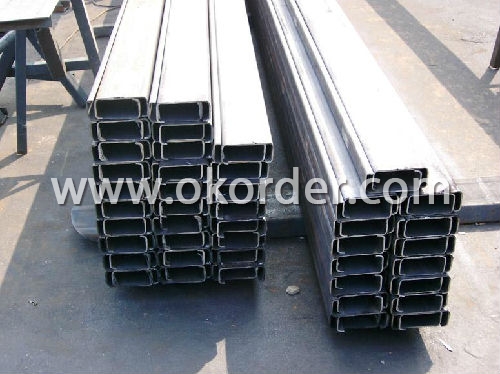
Production Flow of High Quality And Low Price CR C Bar:
1.The steel billet shall be heated in the high temperature furnace.
2. The heated steel billet shall be rolled five to nine times with the aim of shaping the general figure of steel u channel.
3. The hot rolled channel steel should be put onto the cooling bed to make the temperature low.
4. The channel steel should be straighted on the straightener.
5. The straighted channel steel will be cut into meters by saw, as per customer's requirements.
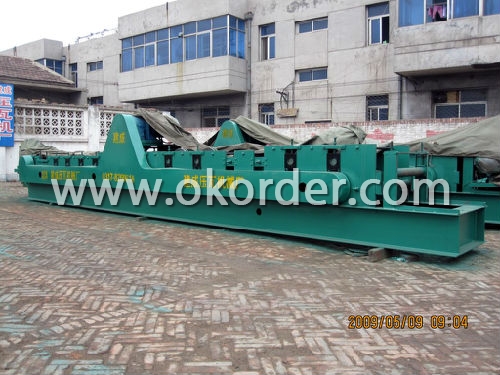
- Q: What is the difference between channel steel and C steel?
- Channel steel is rail steel, relatively thick. C steel is rolled by iron plate
- Q: Are steel channels suitable for residential construction?
- Residential construction can indeed benefit from the use of steel channels. Known as C-channels or U-channels, steel channels are frequently employed in construction due to their strength and durability. They commonly serve as structural elements in framing systems, delivering support and stability to buildings. Steel channels possess numerous advantages that render them suitable for residential construction. Firstly, their high strength-to-weight ratio allows them to bear heavy loads while remaining relatively lightweight. This makes them ideal for constructing floors, walls, and roofs within residential structures. Additionally, steel channels exhibit exceptional resistance to fire, termites, and other pests, which are concerns in residential areas. Unlike materials like wood, they do not warp, rot, or decay, ensuring a longer lifespan for the building. Moreover, steel channels are easily fabricated and installed, streamlining the construction process. They can be cut and shaped to the desired dimensions, allowing for design flexibility. Furthermore, they can be effortlessly connected and welded, guaranteeing strong connections and minimizing the risk of structural failures. Finally, steel channels prove to be cost-effective in the long run. Although they may have a higher initial cost compared to certain materials, their durability and low maintenance requirements result in reduced repair and replacement expenses over time. Nevertheless, it is crucial to consider the specific requirements and regulations of the residential construction project. Consulting professionals, such as architects and engineers, is imperative to ensure the suitability of steel channels for the particular application.
- Q: Hello, I have a question to ask you, do a steel hoop, the outer diameter of 1688MM, with 8# steel roll, want to ask next to the long material, 8# channel 43, formula I for (1688-43) *3.14159=5168mm, this material, placed above the rolling machine to roll how, outside diameter it is more than 1688 Oh, I would like to ask, feeding formula should start rolling steel...Is it possible to stretch the roll with a profile bending machine? Can you recommend 1-2 units? It's best to have the approximate price. I'd like to consider whether I can buy one. Thank you
- Count the amount, and in turn count how much it should be minus 1688, and then do it. Or leave a little margin, roll it repaired.
- Q: What are the different types of hangers used for steel channels?
- There are several different types of hangers used for steel channels, including clevis hangers, u-bolt hangers, pipe hangers, and beam clamps. These hangers are designed to provide support and secure the steel channels in various applications, such as construction, plumbing, and electrical installations. Each type of hanger has its own specific design and mounting method to accommodate different channel sizes and load capacities.
- Q: Are steel channels suitable for high-traffic areas?
- Yes, steel channels are suitable for high-traffic areas. Steel is a durable and strong material that can withstand heavy foot traffic and is resistant to wear and tear. Additionally, steel channels provide structural support and stability, making them ideal for areas with frequent and heavy use.
- Q: What is the weight per meter of different steel channel sizes?
- The weight per meter of different steel channel sizes can vary depending on the specific dimensions and thickness of the channels. Steel channels are typically measured by their height, width, and thickness. To calculate the weight per meter, you would need to know the dimensions and density of the specific type of steel being used. The weight per meter can be calculated by multiplying the cross-sectional area of the channel by the density of the steel. For example, let's assume we have a steel channel with dimensions of 100mm (height) x 50mm (width) x 6mm (thickness), and the density of the steel is 7.85 grams per cubic centimeter (g/cm³). First, let's convert the dimensions to meters: Height = 100mm = 0.1m Width = 50mm = 0.05m Thickness = 6mm = 0.006m Next, calculate the cross-sectional area: Area = Height x Width = 0.1m x 0.05m = 0.005 square meters (m²) Finally, calculate the weight per meter: Weight per meter = Area x Thickness x Density = 0.005m² x 0.006m x 7.85g/cm³ = 0.0002355 kg/m So, for a steel channel with dimensions of 100mm x 50mm x 6mm, the weight per meter would be approximately 0.0002355 kg/m. It is important to note that this calculation is just an example and the weight per meter will vary depending on the specific dimensions and density of the steel being used.
- Q: What is the difference between 12# double channel steel and single channel steel?
- Channel steel is a strip of steel with a cross section. Its specification means: such as 120*53*5, which means that the waist height is 120 millimeters, the width of the leg is 53 millimeters of channel, the waist is 5 mm thick channel, or called 12# channel steel. The same height of the channel, if there are several different leg width and waist thickness, also need to add a, B, C on the right side of the model to distinguish, such as 25a#, 25b#, 25c# and so on.
- Q: How are steel channels classified based on their shape?
- Steel channels are classified based on their shape into three main types: C channels, U channels, and miscellaneous channels. C channels have a C-shaped cross-section, U channels have a U-shaped cross-section, and miscellaneous channels have unique or irregular cross-sectional shapes.
- Q: What is the difference between channel steel and angle steel?
- The cross section of the channel steel is concave, and the cross section of the angle steel is L to form 90 degrees angle, but the length of the two sides is equal. Standard Specification for steel: height (mm) * leg width (mm) * * waist thickness (mm) * length (M) representation, e.g., 75 * 40 * 4.5 * 6.
- Q: How do steel channels perform in high-seismic areas?
- Steel channels perform well in high-seismic areas due to their inherent strength and ductility. In seismic zones, the ground experiences intense shaking and lateral forces, which can cause buildings to undergo significant structural deformation. Steel channels, with their ability to flex and absorb energy, are better equipped to withstand these forces compared to other building materials. The shape of steel channels, with their flanges and web, provides enhanced strength and rigidity. This allows them to resist bending and twisting forces, ensuring the overall stability of structures in high-seismic areas. Furthermore, steel channels can be designed to have tapered flanges, which improves their load-carrying capacity and reduces the risk of buckling during seismic events. Another advantage of steel channels in high-seismic areas is their ability to dissipate energy. During an earthquake, the channel's flexible nature allows it to absorb and distribute the seismic forces, minimizing the impact on the structure. This energy absorption capability reduces the chances of structural damage and enhances the safety of occupants inside the building. Moreover, steel channels offer versatility in design and construction. They can be easily integrated into various structural systems, such as moment frames and braced frames, which are commonly used in earthquake-resistant buildings. This flexibility allows for efficient and cost-effective construction in high-seismic areas. Overall, steel channels provide reliable performance in high-seismic areas by offering strength, flexibility, and energy dissipation capabilities. Their ability to withstand intense shaking and lateral forces makes them a preferred choice for structural applications in seismic zones, ensuring the safety and resilience of buildings in such areas.
1. Manufacturer Overview
| Location | Tianjin, China |
| Year Established | 2007 |
| Annual Output Value | Above US$ 15 Million |
| Main Markets | Southeast Asia; Africa |
| Company Certifications |
2. Manufacturer Certificates
| a) Certification Name | |
| Range | |
| Reference | |
| Validity Period |
3. Manufacturer Capability
| a) Trade Capacity | |
| Nearest Port | Tianjin |
| Export Percentage | 15%-20% |
| No.of Employees in Trade Department | 11-20 People |
| Language Spoken: | English; Chinese; |
| b) Factory Information | |
| Factory Size: | Above 6,500 square meters |
| No. of Production Lines | 1 |
| Contract Manufacturing | OEM service offered |
| Product Price Range | average |
Send your message to us
High Quality And Low Price CR C Bar
- Loading Port:
- Tianjin Port,China
- Payment Terms:
- TT or LC
- Min Order Qty:
- 20Tons m.t.
- Supply Capability:
- 1000 tons per month m.t./month
OKorder Service Pledge
OKorder Financial Service
Similar products
Hot products
Hot Searches
Related keywords
